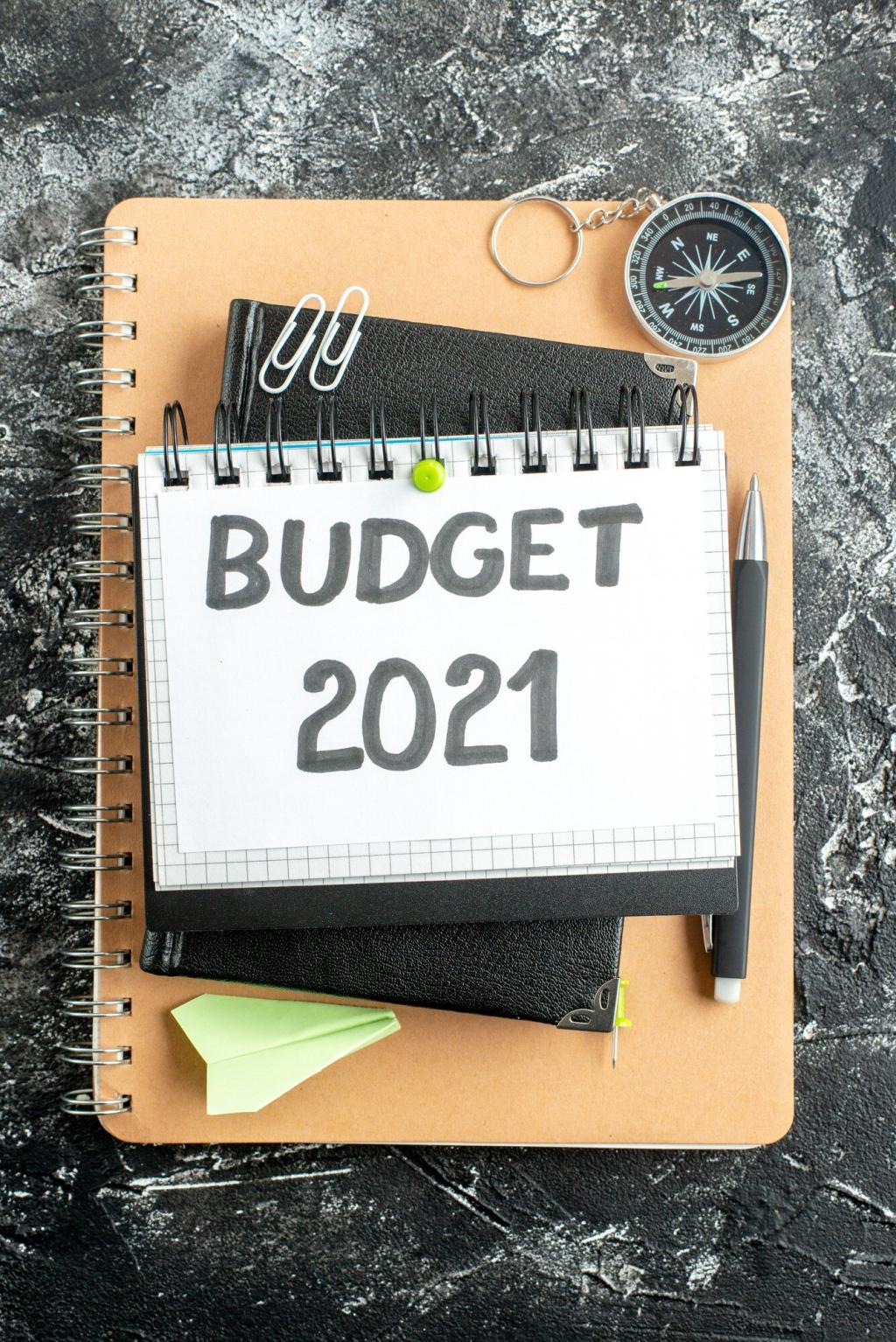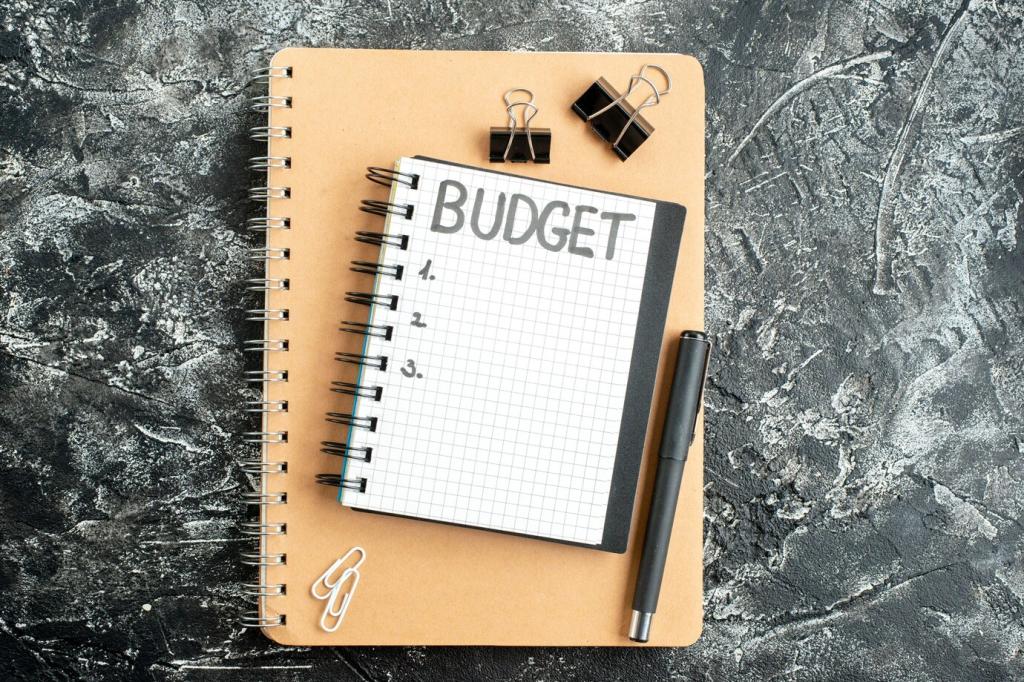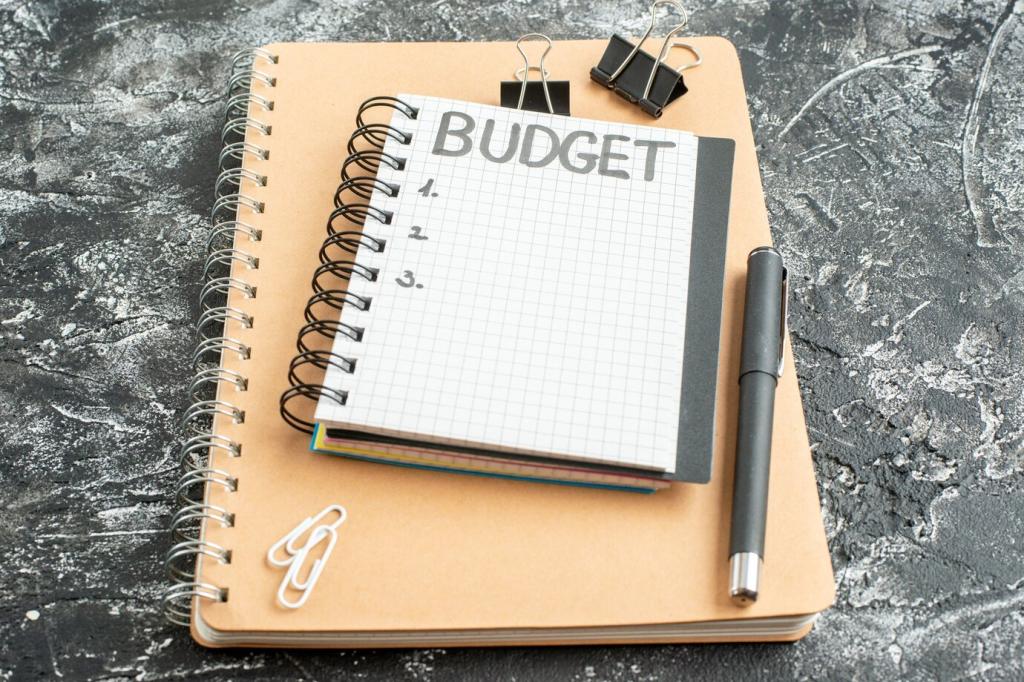Overcoming Common Challenges in Budget Management
Spotting the Hidden Budget Leaks
Subscription Creep and Trial Traps
Audit your cards once a month and list every recurring charge, including trials that slipped through. Set calendar reminders a week before renewals, and consolidate services you actually use. Comment with your biggest surprise find.
Impulse Buying Pattern Interrupts
Create a 24-hour rule for non-essentials, keep a running wish list, and disable one-click purchases. Place a sticky note on your card reminding you of your top goal. Tell us which tactic helps you pause successfully.
Utilities and Habit Tuning
Small changes pay back month after month: adjust thermostat schedules, unplug idle electronics, and track usage in your provider’s app. Share one habit shift you’ll try this week, and subscribe for more bite-sized habit tweaks.
Designing a Realistic Spending Plan
Test zero-based, envelope, or percentage rules for ninety days and pick what feels sustainable. The best system is the one you will revisit weekly. Share your framework choice so others can learn from your experience.
Designing a Realistic Spending Plan
Name one near-term and one long-term goal, then automate small transfers toward both. When your budget funds what matters, motivation sticks. Drop your goals in the comments and subscribe for monthly goal check-ins.



Taming Irregular and Seasonal Costs
List annual or semiannual costs—car maintenance, gifts, insurance—and divide by twelve. Park the monthly amount in labeled subaccounts. Watching those balances grow removes anxiety and prevents credit card scrambles. Which sinking fund will you start today?
Debt Without Budget Burnout
Avalanche saves interest; snowball builds motivation with quick wins. If you need early encouragement, start small. If you love efficiency, go avalanche. Tell us your choice and why—your comment could help someone commit.

Create a Baseline Budget
Base your essentials on your lowest recent month and separate business from personal. Pay yourself a predictable amount, even when invoices are uneven. Comment with your baseline number and how you calculated it.
Build a Two-Month Buffer
Aim to hold at least two months of bare-bones expenses in a buffer account. During high months, feed the buffer; during low months, draw a steady paycheck. Subscribe for our buffer-building checklist and pace plan.
Percentage-Based Rules for Stability
Use simple percentages on every payment—taxes, savings, operating costs, and pay. Adjust quarterly as your average shifts. This removes decision fatigue and preserves essentials. What percentages work for you? Share your split for feedback.

This is the heading
Lorem ipsum dolor sit amet, consectetur adipiscing elit. Ut elit tellus, luctus nec ullamcorper mattis, pulvinar dapibus leo.

This is the heading
Lorem ipsum dolor sit amet, consectetur adipiscing elit. Ut elit tellus, luctus nec ullamcorper mattis, pulvinar dapibus leo.
The Weekly Money Date
Set a fifteen-minute appointment with yourself, same day and time, favorite drink in hand. Categorize transactions, glance at goals, and choose one improvement. Invite a friend to join and subscribe for reminders.
Pick Tools That Fit Your Brain
Spreadsheet, app, or notebook—choose the one you enjoy. If you hate it, you will not use it. Try two options for thirty days and report which felt effortless.
Dashboards That Tell a Story
Use a simple dashboard with progress bars for goals, a debt payoff chart, and a trend line for savings. Place it where you will see it. Share a screenshot of yours.
